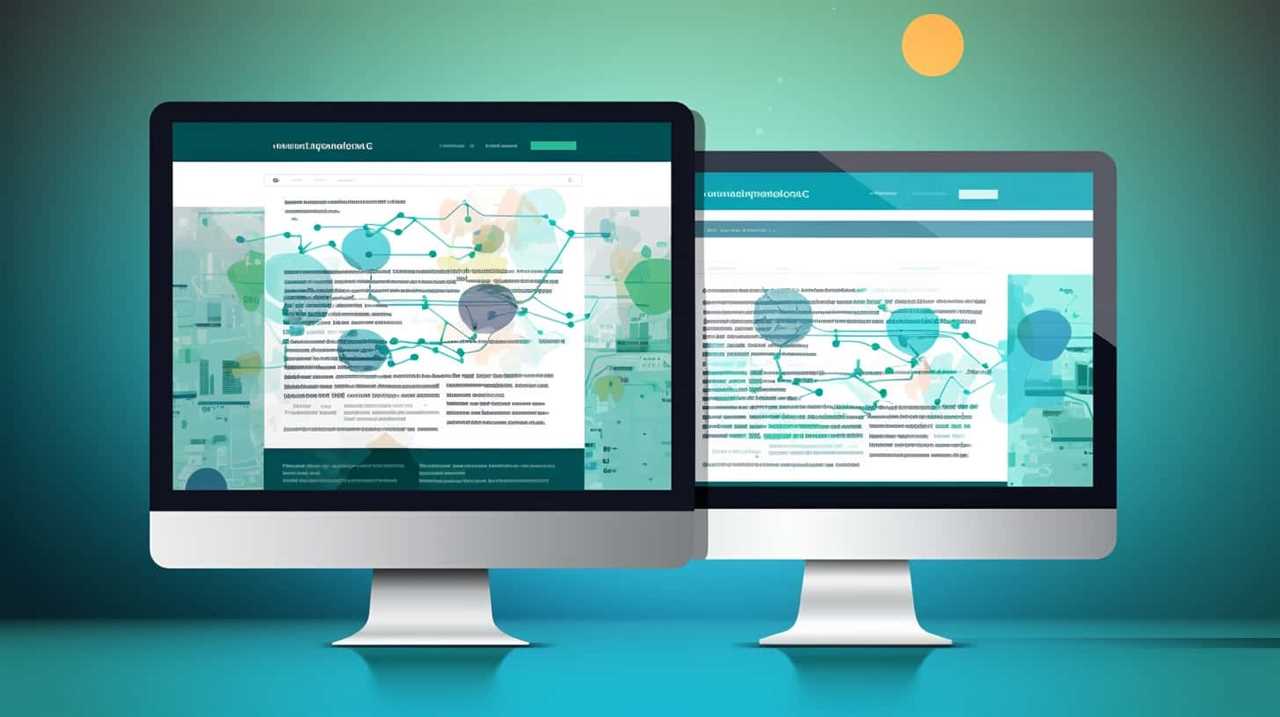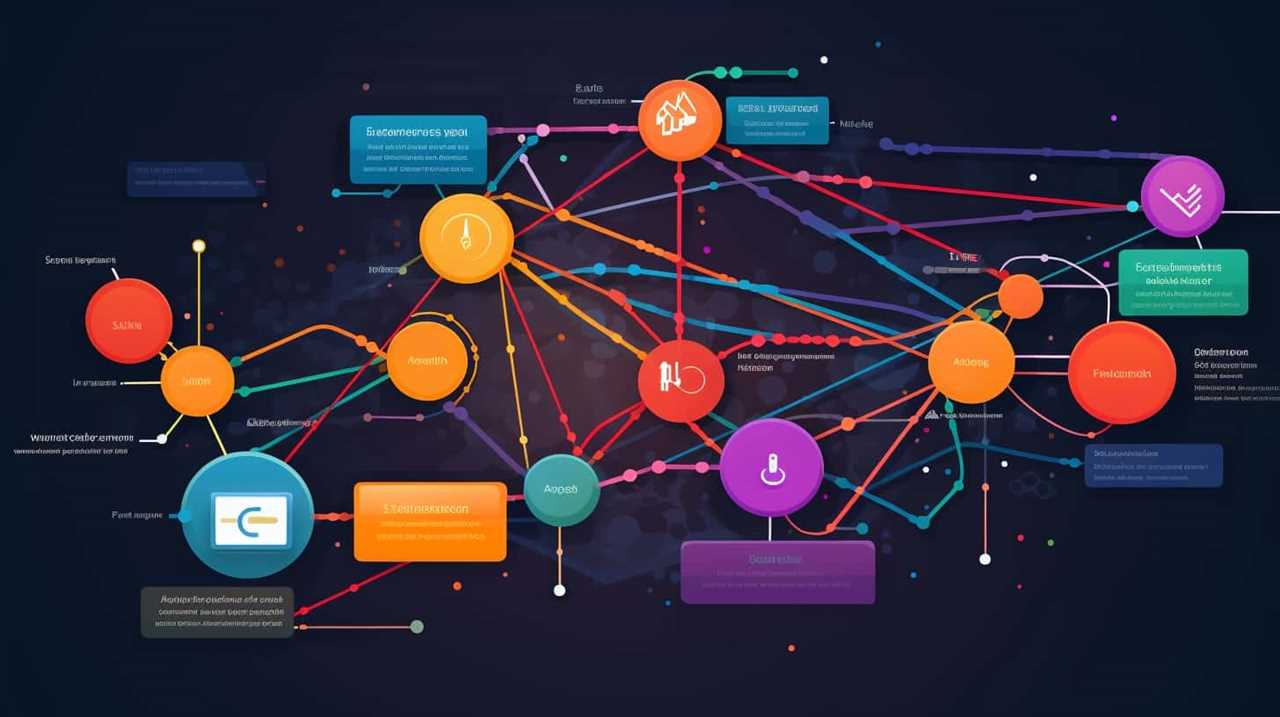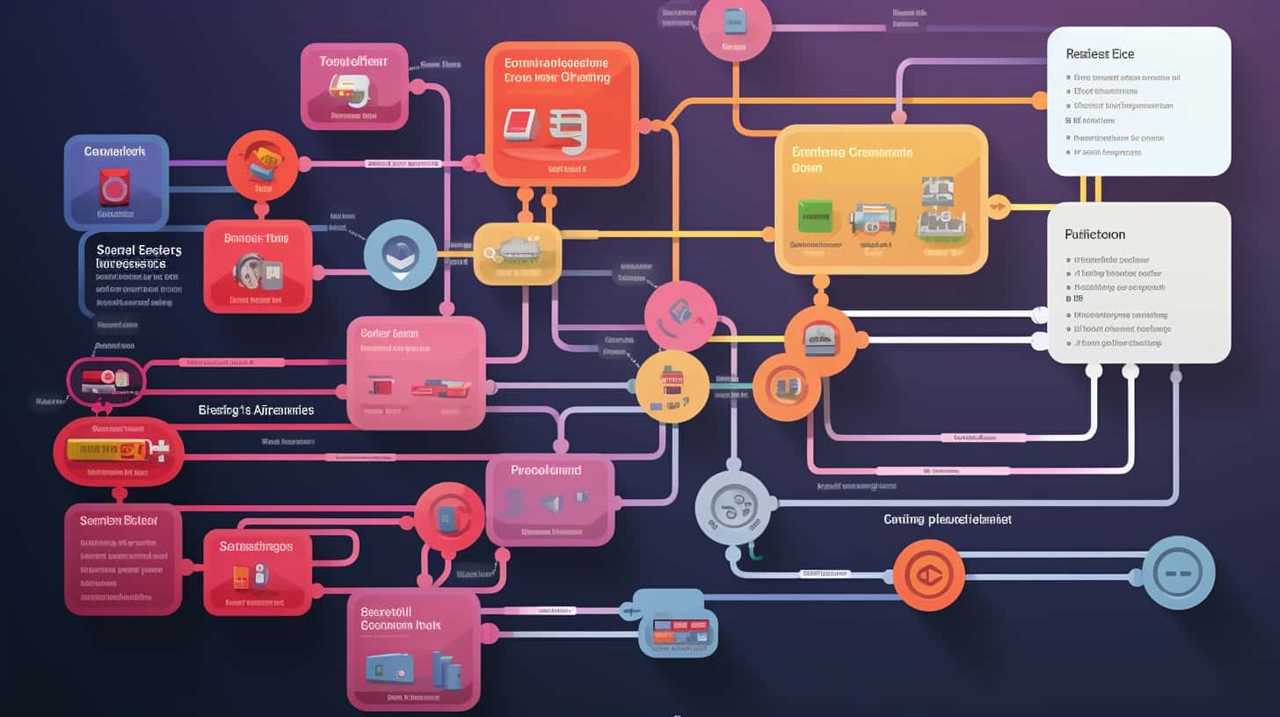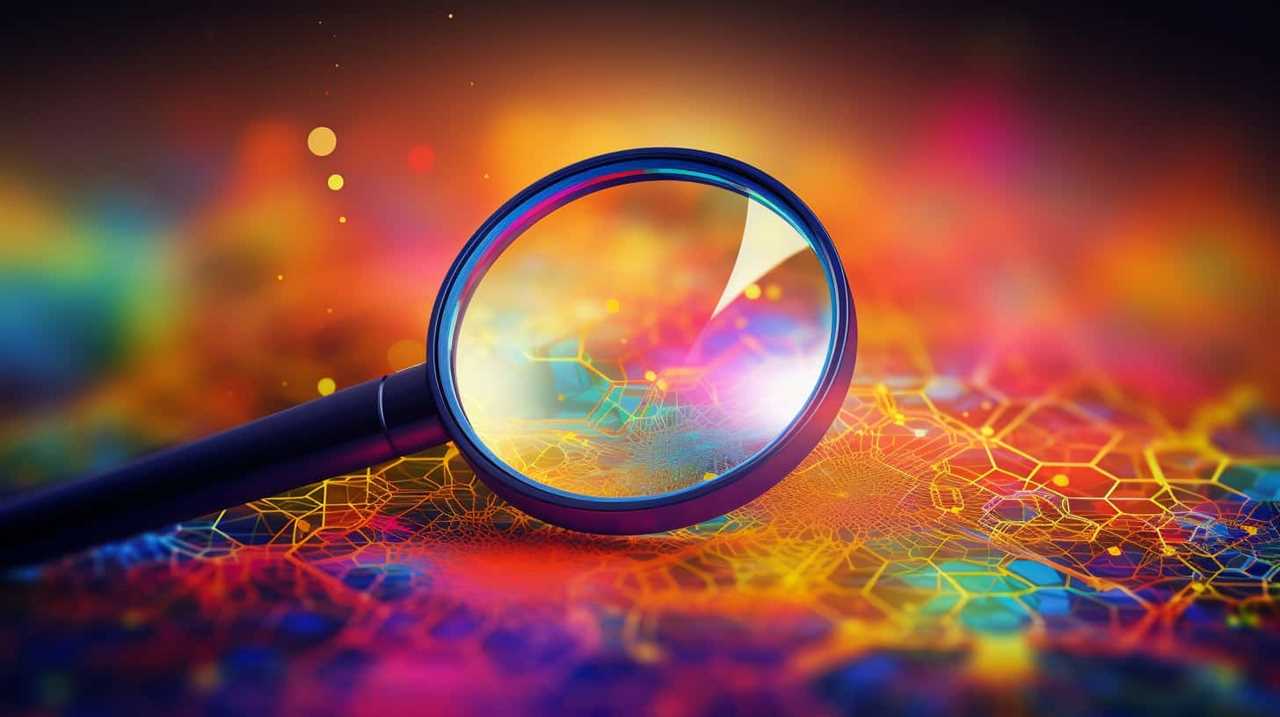Are you ready to master the SEO game? Here’s the ultimate guide for you!
In this article, we’ll share 12 handy tips for keyword and optimization that will take your website to the next level.
From thorough keyword research to optimizing your meta tags and creating high-quality content, we’ll show you the strategies that will make your website shine.
Get ready to master SEO like never before!

Key Takeaways
- Thorough keyword research is crucial for identifying relevant and high-performing keywords.
- Effective keyword placement improves organic rankings and attracts qualified traffic.
- Meta tag optimization enhances website visibility and attracts organic traffic.
- High-quality and engaging content attracts and retains readers.
Conduct Thorough Keyword Research
We conduct thorough keyword research to ensure the effectiveness of our SEO strategy. In depth keyword analysis is crucial for identifying the most relevant and high-performing keywords in our industry. By understanding the search intent behind these keywords, we can tailor our content to meet the needs and expectations of our target audience.
Effective keyword placement is also key in optimizing our website’s visibility in search engine results. By strategically incorporating keywords into our website’s content, meta tags, and headers, we can improve our organic rankings and attract more qualified traffic.
As we move forward, it’s important to optimize your website’s meta tags, which play a vital role in improving click-through rates and conveying the relevance of your web pages to search engines.
Optimize Your Website’s Meta Tags
To optimize our website’s visibility in search engine results, it’s essential to focus on optimizing our website’s meta tags. Meta tag optimization plays a crucial role in improving website visibility and attracting organic traffic.

Here are four tips to optimize your website’s meta tags:
- Title tag optimization: Craft a compelling and keyword-rich title tag that accurately describes the content of your webpage.
- Meta description optimization: Write a concise and persuasive meta description that entices users to click on your website in the search results.
- Keyword inclusion: Incorporate relevant keywords naturally in your meta tags to improve search engine rankings.
- Unique meta tags for each page: Ensure that each webpage has a unique title tag and meta description to avoid duplication issues and provide accurate information.
By optimizing your website’s meta tags, you can enhance its visibility in search engine results and attract more organic traffic.
Now, let’s move on to the next step: writing high-quality and engaging content.
Write High-Quality and Engaging Content
Creating high-quality and engaging content is paramount when aiming to achieve SEO mastery.

In order to attract and retain readers, it’s important to focus on crafting compelling narratives and engaging blog posts.
By creating content that captivates your audience, you increase the chances of them staying on your website longer, reducing bounce rates and improving your SEO rankings.
To achieve this, it’s crucial to understand your target audience and their interests, and then tailor your content to meet their needs.
Incorporate relevant keywords naturally into your writing, ensuring that your content remains informative and strategic.

Use Relevant Keywords in Your Headings and Subheadings
Incorporating relevant keywords into our headings and subheadings is essential for optimizing SEO. By strategically placing keywords in these elements, we can improve the visibility and searchability of our content.
Here are four ways to effectively use keywords in headings and subheadings:
- Use target keywords: Research and identify the most relevant keywords for your content. Incorporate them naturally into your headings and subheadings to signal to search engines what your content is about.
- Maintain hierarchy: Organize your headings and subheadings in a logical hierarchy, using H1 for the main title and H2, H3, etc., for subheadings. This helps search engines understand the structure and context of your content.
- Be descriptive: Use headings and subheadings as an opportunity to provide concise and informative summaries of the content that follows. This not only helps with SEO but also improves user experience.
- Avoid keyword stuffing: While it’s important to include keywords, avoid overusing them. Maintain a balance between optimization and readability.
Optimize Your Images With Descriptive Alt Tags
When it comes to optimizing your images for SEO, one important aspect to consider is the use of descriptive alt tags.
Alt tags provide text descriptions of your images, allowing search engines to understand what the image is about.

Alt Tag Importance
We prioritize optimizing our images with descriptive alt tags to enhance the importance of alt tags in SEO. Alt tags play a vital role in image accessibility and can significantly impact your website’s visibility and rankings. Here are four reasons why alt tags are crucial for SEO mastery:
- Improved accessibility: Alt tags provide a text alternative for visually impaired users, helping them understand the content of an image.
- Enhanced user experience: Descriptive alt tags provide context and relevance to images, making the overall user experience more engaging and informative.
- Keyword optimization: Alt tags allow you to incorporate relevant keywords related to your content, improving your website’s search engine visibility.
- Image search optimization: Alt tags help search engines understand the content of your images, making them more likely to appear in image search results.
By prioritizing descriptive alt tags, you can optimize your images for both user experience and search engine optimization.
Now, let’s dive into the next section about descriptive image optimization.
Descriptive Image Optimization
To optimize your images with descriptive alt tags, we can start by focusing on the importance of incorporating relevant keywords.

When it comes to image SEO and visual content optimization, descriptive alt tags play a crucial role in improving your website’s visibility and search engine rankings.
Alt tags are HTML attributes that provide text descriptions of your images, helping search engines understand what the image is about.
By including relevant keywords in your alt tags, you can optimize your images for specific search queries and attract more organic traffic to your website.
Additionally, descriptive alt tags make your website more accessible to visually impaired users who rely on screen readers to navigate the web.

Now that we’ve covered the importance of descriptive image optimization, let’s move on to the next topic: building high-quality backlinks to your website.
Build High-Quality Backlinks to Your Website
One effective strategy to boost your website’s SEO is by acquiring a significant number of high-quality backlinks. High authority backlinks from reputable websites can greatly improve your website’s visibility and ranking in search engine results.
Here are four essential link building strategies to help you build high-quality backlinks:
- Guest blogging: Reach out to authoritative websites in your niche and offer to write informative and relevant guest posts. In return, you can include a link back to your website in the author bio or within the content.
- Broken link building: Find broken links on high authority websites and suggest your own relevant content as a replacement. This not only helps the website owner fix broken links but also allows you to gain a valuable backlink.
- Influencer outreach: Connect with influencers in your industry and collaborate on content creation or promotions. By leveraging their audience and reputation, you can generate high-quality backlinks to your website.
- Content promotion: Promote your high-quality content through social media, email marketing, and online communities. This can attract attention from other website owners who may link back to your content.
Improve Your Website’s Loading Speed
Let’s talk about two important techniques that can greatly improve your website’s loading speed:

- Image compression: By compressing your images, you can reduce their file size without sacrificing quality, allowing them to load faster.
- Caching and browser optimization: Implementing caching and browser optimization techniques can help store and retrieve data more efficiently, resulting in quicker load times for your website.
These techniques, when used in combination, can significantly enhance the loading speed of your website.
Image Compression Techniques
We improve our website’s loading speed by implementing image compression techniques.
Image compression refers to reducing the file size of images without significantly impacting image quality.
Here are four effective image compression techniques:

- Use the right file format: Choose the appropriate file format for each image. JPEG is best for photographs, while PNG is ideal for images with transparency.
- Resize images: Scale down the dimensions of the image to match the required display size on your website. This reduces the file size without compromising quality.
- Optimize image quality: Adjust the image quality settings to find the right balance between file size reduction and image clarity.
- Utilize compression tools: Take advantage of online compression tools or plugins that automatically compress your images while maintaining optimal quality.
Implementing these image compression techniques will significantly improve your website’s loading speed, providing a better user experience and boosting your SEO efforts.
Caching and Browser Optimization
To improve our website’s loading speed, we optimize caching and browser settings. Caching refers to the process of storing website data in the browser cache, allowing faster retrieval when the user revisits the site. By utilizing the browser cache effectively, we can reduce the time it takes for the website to load. Additionally, optimizing browser settings can further enhance website performance. Here are some key settings to consider:
| Setting | Description | |
|---|---|---|
| 1 | Enable Compression | Compresses files before sending them to the browser |
| 2 | Minify CSS and JS | Removes unnecessary characters to reduce file size |
| 3 | Enable Gzip Compression | Compresses website files for faster delivery |
| 4 | Reduce HTTP Requests | Minimize the number of requests made to the server |
Optimize Your Website for Mobile Devices
Optimizing your website for mobile devices is essential for improving search engine rankings and enhancing user experience. With the increasing number of people accessing the internet through mobile devices, it’s crucial to ensure that your website is mobile-friendly.
Here are four tips to help you optimize your website for mobile devices:

- Implement a mobile-friendly design: Make sure your website is visually appealing and easy to navigate on smaller screens. Utilize responsive web design techniques to ensure that your website adapts to different screen sizes.
- Optimize page load times: Mobile users have limited patience, so it’s important to optimize your website’s load times. Compress images, minify code, and leverage browser caching to improve performance.
- Use mobile-friendly content: Tailor your content to suit mobile users. Keep paragraphs short, use bullet points, and make sure your fonts are legible on smaller screens.
- Test and optimize: Regularly test your website on different mobile devices to ensure it functions properly. Use tools like Google’s Mobile-Friendly Test to identify any issues and make necessary improvements.
By optimizing your website for mobile devices, you can improve your search engine rankings and provide a better user experience for your visitors.
Now let’s explore the next topic: utilizing internal linking to improve site navigation.
Utilize Internal Linking to Improve Site Navigation
Implementing internal linking is a valuable strategy that enhances site navigation and improves user experience. It allows us to seamlessly guide visitors through our website, strategically linking relevant pages within our site. By doing this, we can create a logical site structure that makes it easy for users to find the information they need.
Internal linking also helps search engines understand the hierarchy and relevance of our content. This understanding can positively impact our website’s visibility in search results. Additionally, internal linking encourages visitors to explore more pages on our site, increasing their engagement and time spent on our website.

By optimizing our internal linking, we can create a user-friendly site structure that promotes a positive user experience and improves our overall SEO efforts.
Now, let’s move on to the next section and discuss the importance of regularly updating and optimizing our website’s content.
Regularly Update and Optimize Your Website’s Content
Updating and optimizing our website’s content is crucial for maintaining a strong online presence and ensuring that our site remains relevant and valuable to both users and search engines.
To achieve this, we need to regularly review and refresh our website’s content. Here are four key reasons why updating and optimizing our website’s content is essential:

- Improved SEO: By regularly updating our content, we can incorporate relevant keywords and improve our website’s search engine rankings.
- Enhanced User Experience: Updating our content helps us provide fresh and valuable information to our audience, making their experience on our website more enjoyable and engaging.
- Website Design Optimization: Regularly updating our content allows us to align it with our website’s design, ensuring a cohesive and visually appealing user experience.
- Stay Ahead of the Competition: By continually optimizing our content, we can stay ahead of our competitors by offering the most up-to-date and relevant information to our users.
Monitor and Analyze Your Website’s Performance With SEO Tools
To effectively monitor and analyze our website’s performance, we utilize SEO tools. These tools allow us to track website performance, identify areas for improvement, and make data-driven decisions.
One important aspect of monitoring our website’s performance is conducting an SEO tool comparison. By comparing different tools, we can find the ones that provide the most accurate and comprehensive data, as well as the features that best suit our needs. This helps us optimize our website and improve its visibility in search engine results.
Tracking website performance is crucial for understanding how our efforts are paying off and making necessary adjustments along the way.
In the next section, we’ll discuss the importance of staying updated with the latest SEO trends and algorithm changes to maintain our website’s optimization strategy.

Stay Updated With the Latest SEO Trends and Algorithm Changes
Continuing our analysis of website performance and optimization, we stay updated with the latest SEO trends and algorithm changes to ensure our strategies remain effective. Staying on top of the ever-evolving world of SEO is crucial for maintaining a successful online presence.
Here are four key reasons why staying updated with the latest SEO trends and algorithm changes is essential for your SEO strategy:
- Stay ahead of the competition: By staying updated with the latest SEO trends, you can stay one step ahead of your competitors and ensure that your website ranks higher in search engine results.
- Adapt to algorithm changes: Google algorithm updates can significantly impact your website’s ranking. By staying updated, you can adapt your SEO strategy to meet the new requirements and maintain your visibility.
- Optimize user experience: SEO trends often focus on improving user experience. By staying updated, you can implement strategies that enhance your website’s usability, resulting in higher engagement and conversions.
- Maximize organic traffic: Following the latest SEO trends and algorithm changes can help you optimize your website for increased organic traffic, leading to higher visibility and better business opportunities.
Frequently Asked Questions
How Can I Ensure That My Website’s Loading Speed Is Optimized?
To ensure our website’s loading speed is optimized, we implement various optimization techniques. By compressing images, minimizing HTTP requests, and utilizing browser caching, we improve website speed and enhance user experience.
What Are Some Effective Techniques for Building High-Quality Backlinks to My Website?
To build authority and boost our website’s rankings, we employ effective link building strategies. By creating valuable content, reaching out to influencers, and guest posting, we can secure high-quality backlinks.

How Can Internal Linking Improve Site Navigation on My Website?
Improving user experience and increasing website engagement are two key benefits of internal linking. It enhances site navigation by connecting relevant pages, allowing users to easily explore and find valuable content.
What Are the Best SEO Tools to Monitor and Analyze My Website’s Performance?
We use a variety of SEO tools to monitor and analyze our website’s performance. These tools help us track website traffic, conduct competitor analysis, and make strategic decisions to improve our SEO strategy.
Where Can I Find the Latest Information on SEO Trends and Algorithm Changes?
We can find the latest information on SEO trends and algorithm changes by actively participating in SEO forums and regularly reading industry blogs. These sources provide valuable insights for those seeking mastery in the field.
Conclusion
In conclusion, mastering SEO requires a combination of research, optimization, and staying up-to-date with the latest trends.

By conducting thorough keyword research, optimizing meta tags, and creating high-quality content, you can improve your website’s visibility.
Utilizing internal linking and regularly updating your content also contribute to a successful SEO strategy.
Monitoring and analyzing your website’s performance with SEO tools will help you make informed decisions.
Remember, staying on top of the ever-changing SEO landscape is essential for long-term success. So, keep your finger on the pulse of the industry and adapt accordingly.










